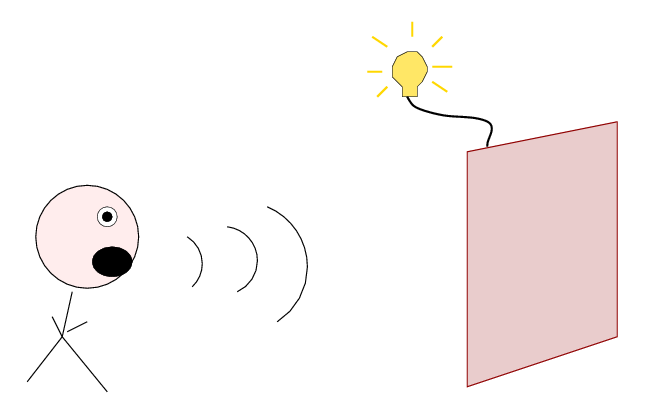 Viewgraph 2
Viewgraph 2
 Viewgraph 3
Viewgraph 3
 Viewgraph 4
Viewgraph 4
Human speech is created by the vibrations of the vocal cords in the throat. They set up waves in the gas which fills the throat, and those waves then propagate through the throat and mouth on their way to the outside world.
Replacing the air which fills the throat and mouth with a different gas -- one which has a sound speed much faster or slower than air -- can cause the sound waves emanating from the mouth to sound ... quite different.
 Viewgraph 5
Viewgraph 5
 Viewgraph 6
Viewgraph 6
 Viewgraph 7
Viewgraph 7
Let's look at the human hearing mechanism for a moment. It has a very wide dynamic range:
maximum for safe detection, without damage to ear
delta-Pressure P ~ 2.8 x 10^(+1) Pascals
minimum for detection
delta-Pressure P ~ 2.8 x 10^(-5) Pascals
Can you figure out the amplitudes of motion of the air molecules in the following two sounds?
- Jane whispers very softly in Jack's ear, so that he can barely detect her voice. Her voice has a frequency of about 1000 Hz.
- Andy asks his mother to pass the salt in an ordinary manner. His voice produces pressure waves which are about 1000 times larger in amplitude than Jane's waves. His voice has a frequency of about 300 Hz.
The typical human eardrum has a diameter of about 8 mm. In ordinary conversation, the pressure fluctuations on the membrane of the drum have an amplitude of about 0.028 Pascals.
Q: What is the magnitude of the fluctuations
in the FORCE exerted on the eardrum
in ordinary conversation?
Q: Suppose we make a model of the eardrum
by stretching a piece of plastic over
the mouth of a bottle. In order to
exert a similar force on this plastic,
we place an object on the plastic,
so its weight presses down.
What is the mass of an object which
will exert the proper force?
 Viewgraph 8
Viewgraph 8
 Viewgraph 9
Viewgraph 9
 Viewgraph 10
Viewgraph 10
 Viewgraph 11
Viewgraph 11
